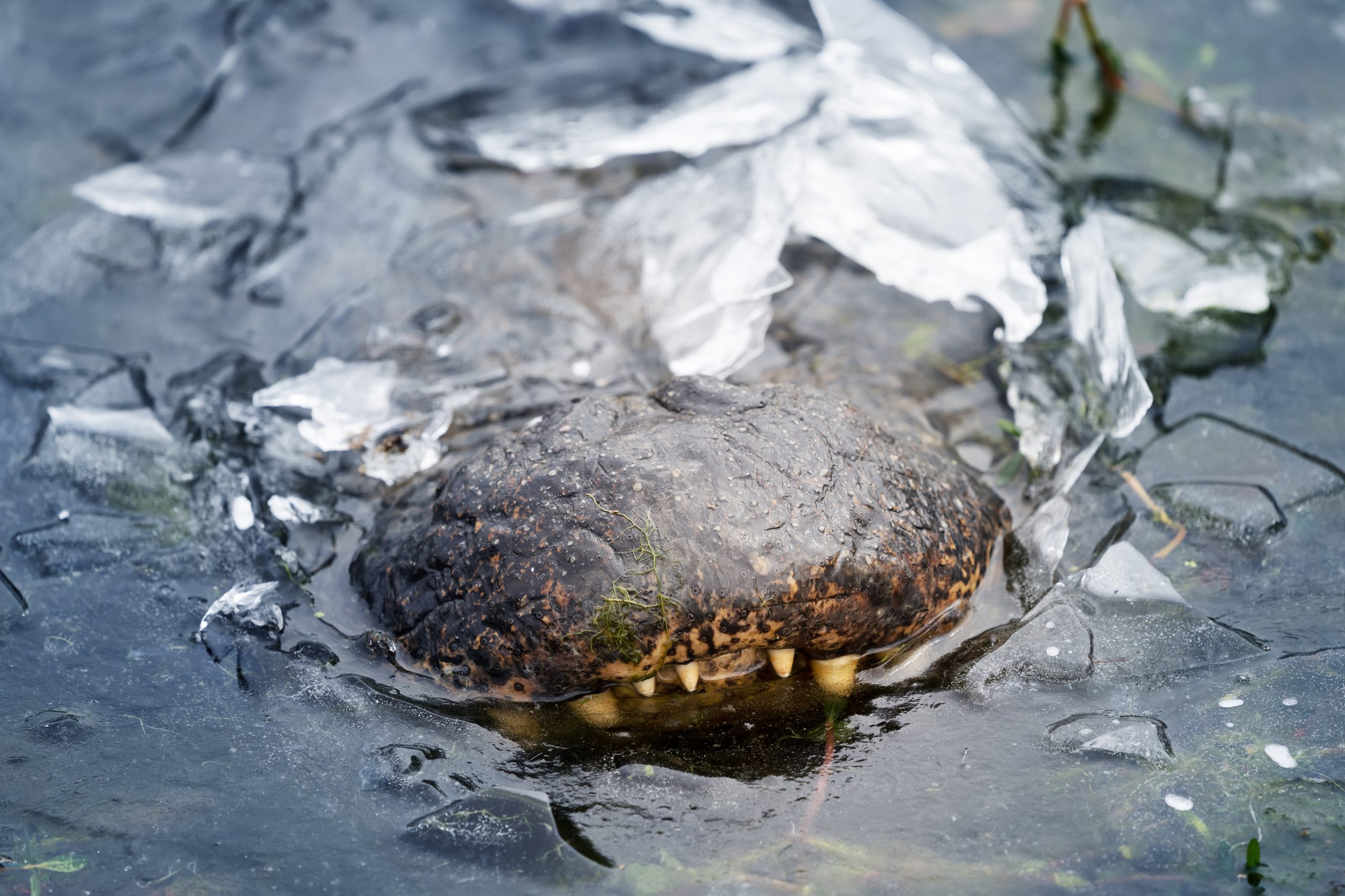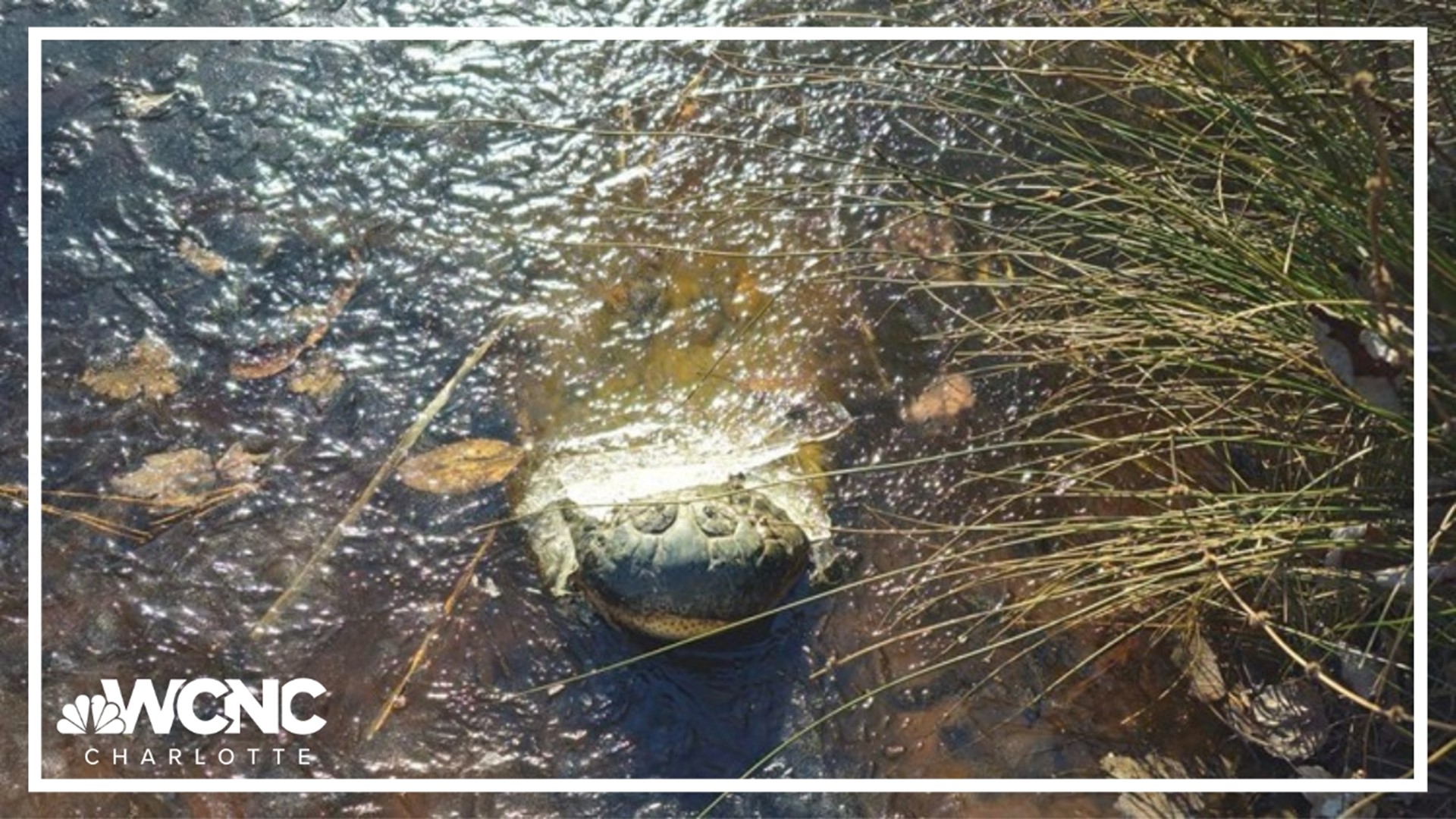Frozen Alligators In North Carolina: The Unbelievable Survival Story
Have you ever heard about frozen alligators in North Carolina? If not, buckle up because this is one wild tale you won't forget anytime soon. Picture this: alligators literally frozen in time, their bodies trapped in icy waters, yet somehow still alive when the ice melts. Sounds like something outta a sci-fi movie, right? But guess what? It's 100% real, and it’s happening right here, right now, in the swamps of North Carolina.
Now, you might be wondering, "How on earth do these creatures manage to pull off such a crazy stunt?" Well, my friend, that’s exactly what we’re about to dive into. This story isn’t just about frozen gators—it’s about resilience, adaptation, and the incredible ways nature finds to keep going no matter what life throws at it.
So, whether you're an animal lover, a science enthusiast, or just someone who loves weird but true stories, this article is for you. Let's explore the world of frozen alligators in North Carolina and uncover the secrets behind their icy survival tricks. Stick around, because things are about to get wild!
- P Deddy The Rising Star In The World Of Entertainment
- Unveiling The Thrills Of Science Fiction Mystery Your Ultimate Deep Dive
Table of Contents
- Introduction to Frozen Alligators
- The Biology Behind the Freeze
- North Carolina's Perfect Alligator Habitat
- What Is Brumation?
- Survival Strategies of Alligators
- Environmental Impact on Alligator Behavior
- Threats to Alligator Populations
- Conservation Efforts in North Carolina
- Alligator Population Statistics
- The Future of Frozen Alligators
Introduction to Frozen Alligators
Alright, let's break it down. Frozen alligators in North Carolina? Yeah, it’s a thing. These cold-blooded creatures have evolved some seriously cool tricks to survive extreme weather conditions. When the temperature drops, and the water freezes, alligators don’t just pack up and leave. Instead, they go into a state called brumation, which is kinda like hibernation but for reptiles. During this time, their bodies slow down, and they can literally stick their snouts out of the ice to breathe while the rest of their body stays frozen.
But why does this happen? Well, North Carolina’s climate can be unpredictable, especially during winter. While it’s not as cold as, say, Alaska, temperatures can still dip low enough to freeze shallow waters. And where do you think alligators like to hang out? Yup, you guessed it—those very same shallow waters. So, when the ice sets in, these gators have no choice but to adapt or face the consequences.
Why Study Frozen Alligators?
Studying frozen alligators isn’t just fascinating; it’s also super important for understanding how animals adapt to changing environments. With climate change becoming a bigger issue every year, learning about how species like alligators cope with extreme weather could help us predict and mitigate potential threats to wildlife. Plus, let’s be honest—this stuff is just plain cool!
- The Noodle Dance A Cultural Phenomenon Thatrsquos Taking The World By Storm
- Mission To Mars Humanitys Leap Into The Red Planet
The Biology Behind the Freeze
Alright, let’s talk science. How exactly do alligators manage to freeze without turning into popsicles? It all comes down to biology. Alligators are ectothermic, meaning they rely on external sources of heat to regulate their body temperature. When the water gets too cold, their metabolism slows waaaay down, allowing them to survive for extended periods without eating or moving much.
In addition to brumation, alligators have this amazing ability to lower their heart rate and conserve energy. They can go days, even weeks, with minimal oxygen intake. And here’s the kicker—they can breathe through their snouts while frozen in ice. This adaptation allows them to stay alive until the ice melts, at which point they spring back to life like nothing ever happened. Pretty wild, huh?
Key Adaptations for Survival
- Slowed metabolism during brumation
- Ability to breathe through frozen surfaces
- Conservation of energy by reducing movement
- Strong immune systems to fight off infections
North Carolina's Perfect Alligator Habitat
North Carolina might not be the first place that comes to mind when you think of alligator country, but trust me, it’s a prime spot. The state’s coastal plains and wetlands provide the perfect environment for these reptiles to thrive. Places like Shallotte River Swamp Park and Shallotte River Swamp are home to thriving alligator populations.
What makes North Carolina so ideal? For starters, the climate is mild compared to northern states, but it’s still cool enough during winter to trigger brumation. Plus, the abundance of freshwater habitats ensures that alligators have plenty of space to roam and plenty of food to munch on during warmer months.
Shallotte River Swamp: A Gator Haven
One of the most famous locations for observing frozen alligators is Shallotte River Swamp. During winter, visitors can witness firsthand how these creatures freeze in place, only to emerge unscathed once the ice thaws. It’s a sight that never gets old and has made Shallotte River Swamp a hotspot for nature enthusiasts and researchers alike.
What Is Brumation?
Brumation is essentially the reptilian version of hibernation. Unlike mammals, which lower their body temperature and enter a deep sleep, reptiles like alligators slow down their bodily functions but remain semi-conscious. During brumation, alligators stop eating and reduce their activity levels significantly. They may burrow into mud or stay submerged in water, emerging occasionally to take a breath.
Interestingly, brumation isn’t just limited to alligators. Many reptiles, including snakes and turtles, use this strategy to survive harsh winters. However, alligators take it to the next level by freezing in place while still managing to breathe. Talk about multitasking!
Survival Strategies of Alligators
Beyond brumation, alligators have developed several other survival strategies to handle tough conditions. For example, they’re known to dig burrows in the mud, creating safe havens where they can retreat during extreme weather. These burrows not only protect them from freezing temperatures but also serve as nurseries for young alligators.
Another impressive trait is their ability to regulate buoyancy. By adjusting the amount of air in their lungs, alligators can control whether they float or sink. This comes in handy when they need to escape predators or avoid icy waters. It’s like having a built-in life jacket!
Top Survival Tricks
- Digging burrows for shelter
- Regulating buoyancy to avoid ice
- Using snouts to breathe through frozen surfaces
- Slowing metabolism to conserve energy
Environmental Impact on Alligator Behavior
Climate change is having a noticeable impact on alligator behavior, especially in regions like North Carolina. Warmer winters mean fewer opportunities for brumation, which could affect the overall health of alligator populations. On the flip side, milder temperatures could expand their range further north, potentially leading to conflicts with humans.
Conservationists are keeping a close eye on these changes to ensure that alligator habitats remain protected. Efforts include monitoring water quality, preserving wetlands, and educating the public about coexisting with wildlife. After all, the future of frozen alligators depends on our ability to maintain a balanced ecosystem.
Climate Change and Alligators
While alligators are incredibly adaptable, they’re not immune to the effects of climate change. Rising temperatures and shifting weather patterns could disrupt their natural cycles, making it harder for them to survive. Scientists are working hard to understand these impacts and develop strategies to mitigate them before it’s too late.
Threats to Alligator Populations
Despite their tough exterior, alligators face numerous threats in the wild. Habitat destruction, pollution, and human-wildlife conflict are just a few of the challenges they encounter daily. In North Carolina, development along the coast has led to the loss of critical wetland areas, forcing alligators into smaller and more fragmented habitats.
Additionally, illegal hunting and poaching continue to pose significant risks. Although alligator hunting is regulated in most states, some individuals still engage in illegal activities, putting entire populations at risk. Conservation efforts are crucial to ensuring that these magnificent creatures can continue to thrive in the wild.
Conservation Efforts in North Carolina
North Carolina has taken several steps to protect its alligator populations. The state has implemented strict regulations on hunting and established protected areas where alligators can live without fear of persecution. Educational programs aimed at raising awareness about alligator behavior and habitat needs have also been successful in reducing human-wildlife conflicts.
One notable initiative is the Alligator Management Program, which focuses on monitoring population trends, addressing nuisance complaints, and promoting coexistence between humans and alligators. Through collaboration with local communities and organizations, this program has made significant strides in preserving North Carolina’s alligator population.
Alligator Population Statistics
According to recent estimates, there are approximately 100,000 alligators living in North Carolina. While this number may seem impressive, it’s important to remember that these populations are still vulnerable to various threats. Conservationists are closely monitoring these numbers to ensure that they remain stable over time.
Interestingly, research suggests that alligator populations in North Carolina are slightly smaller than those in neighboring states like Florida and Georgia. This difference is likely due to variations in climate and habitat availability. However, with continued conservation efforts, there’s hope that North Carolina’s alligator population will continue to grow.
The Future of Frozen Alligators
So, what does the future hold for frozen alligators in North Carolina? With ongoing research and conservation efforts, the outlook is cautiously optimistic. Scientists are learning more about how alligators adapt to changing environments, and this knowledge could lead to new strategies for protecting them in the wild.
Of course, there are still challenges ahead. Climate change, habitat loss, and human-wildlife conflict remain significant concerns. But by working together, we can ensure that future generations have the chance to witness the incredible spectacle of frozen alligators in North Carolina.
Final Thoughts
There you have it—the incredible story of frozen alligators in North Carolina. These resilient creatures remind us that nature is full of surprises and that even in the face of adversity, life finds a way to persevere. So, the next time you hear about alligators freezing in place, don’t be alarmed—just marvel at the wonders of the natural world.
Now, it’s your turn! Did you learn something new today? Do you have any questions or thoughts about frozen alligators? Leave a comment below and let’s keep the conversation going. And don’t forget to share this article with your friends so they can join in on the fun. Until next time, stay wild!



Detail Author:
- Name : Vernie Ankunding
- Username : eduardo.macejkovic
- Email : brown75@corkery.com
- Birthdate : 1983-12-30
- Address : 17419 Fritsch Ville Mckenziestad, IN 09183-5455
- Phone : (570) 984-6952
- Company : Schaefer, Schuppe and Volkman
- Job : Secretary
- Bio : Praesentium omnis placeat quia molestias quam. Delectus atque ea nobis natus. Libero fugit velit quis. Impedit delectus quod sunt saepe saepe.
Socials
tiktok:
- url : https://tiktok.com/@monahant
- username : monahant
- bio : Ex ad necessitatibus unde laboriosam labore maxime aut voluptatem.
- followers : 3975
- following : 2529
linkedin:
- url : https://linkedin.com/in/theamonahan
- username : theamonahan
- bio : Est earum est maiores qui sint.
- followers : 1753
- following : 1521